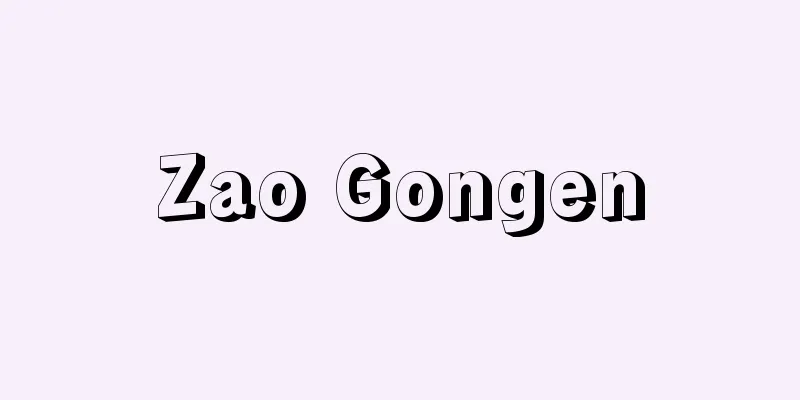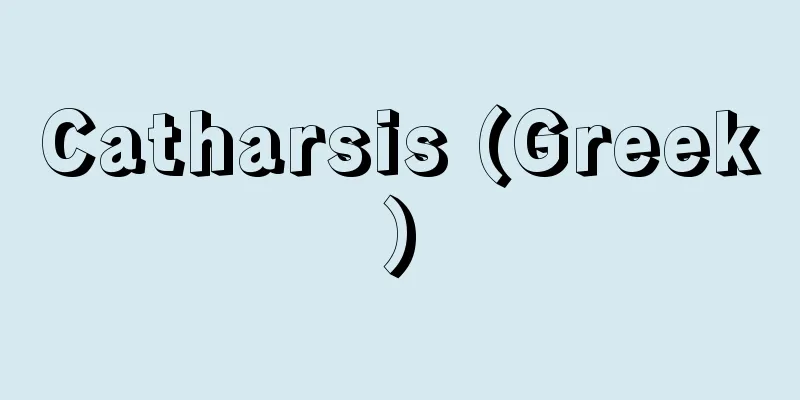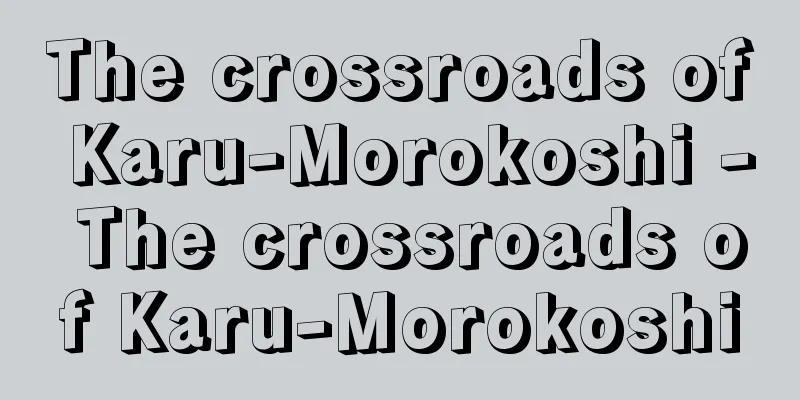Zao Gongen

|
Also called Kongo-Zao Bosatsu. The head of Shugendo faith. The name Zao Gongen began to be used around the mid-Heian period, and the oldest example is an inscription on a sutra tube buried in a sutra mound on Mount Kinpu in Yamato by Fujiwara no Michinaga in 1007. It is said that En no Gyoja had a vision of Zao Gongen on Mount Kinpu. It is thought that the combination of Mount Kinpu faith, a unique Japanese mountain faith, and Zao Gongen occurred before the Nara period, but with the spread of the En no Gyoja creation theory and Suijaku faith (→Suijaku), Zao Gongen began to be worshiped as the head of Shugendo. This is estimated to have occurred around the mid-Heian period. The appearance of the deity is not uniform, but it is generally one-faced, three-eyed, two-armed, with a wrathful expression, right hand raised high and holding a vajra (three-pronged pestle), left hand in a sword mudra and placed on the hip, right foot on the ground, left foot kicking up into the air. The statues resemble the Five Great Powerful Bodhisattvas described in the old translation of the Niōkyō Sutra. Old examples of these statues include the carved Zaō-gon portrait with the date 1001 inscribed on it at Soji-ji Temple (Nishiarai Daishi) in Tokyo, the wooden Zaō-gon portrait at Koryū-ji Temple, six Zaō-gon portraits at Sanbutsu-ji Temple, and several dozen gilt bronze Zaō-gon portraits excavated from the Kinpu-san sutra mound. Source: Encyclopaedia Britannica Concise Encyclopedia About Encyclopaedia Britannica Concise Encyclopedia Information |
|
金剛蔵王菩薩ともいう。修験道信仰の総主。蔵王権現というようになったのは平安時代中期頃からで,藤原道長が寛弘4 (1007) 年に大和の金峯山経塚に埋めた経筒の銘文に記されたのが古い例である。蔵王権現は役行者が金峯山上で感得したと伝えられている。日本固有の山岳信仰である金峯山信仰と蔵王権現が結合したのは奈良時代以前と考えられるが,役小角開創説や垂迹信仰 (→垂迹 ) の普及に伴い,修験道の総主として信仰されるようになった。これはほぼ平安時代中期と推定される。形像も一定ではないが,一般的に一面三目二臂で,忿怒の形相をし,右手を高くあげて三鈷杵 (さんこしょ) を持ち,左手は剣印にして腰に置き,右足は大地を踏み,左足は虚空に蹴上げている。旧訳『仁王経』に説く五大力菩薩像に似た形像がみられる。遺像の古い例としては東京総持寺 (西新井大師) 蔵の長保3 (1001) 年銘の毛彫蔵王権現像,広隆寺蔵の木造蔵王権現像などのほか,三仏寺蔵の蔵王権現像6躯,金峯山経塚出土の金銅蔵王権現像数十躯などがある。
出典 ブリタニカ国際大百科事典 小項目事典ブリタニカ国際大百科事典 小項目事典について 情報 |
Recommend
Misenus
...It was believed that blowing a conch shell wou...
Tweed - Tweed (English spelling)
Originally, it was a woolen fabric with a 2-2 twi...
Quercus myrsinaefolia (English spelling)
…[Motoji Okamoto] [Aya Nitta]. … *Some of the ter...
Kagawa Shuutoku
A Confucian physician from the mid-Edo period. He...
Mr. Sudo Yamauchi
A medieval samurai family from Sagami. Its ancesto...
Otafuku mochi - Otafuku mochi
...Daifuku mochi is a flattened version of this. ...
Bauhinia (English spelling) Bauhinia; orchid tree
A general term for the genus Bacillarioides in the...
Anglo-Arab (English spelling)
…They have been imported to Japan many times sinc...
Eberhard I - Eberhard
… [history] During the High Middle Ages, up until...
Via Postumia (English spelling)
…It stretches from Rome to Ariminum via Fanum For...
Film copy - Eishabon
A book made by placing thin paper such as ganpish...
benben
…The Greeks called this obeliskos (meaning skewer...
Leavis, Frank Raymond
Born: July 14, 1895, Cambridge [Died] April 14, 19...
Hope, Bob
Born: May 26, 1903, Eltham, near London [Died] Jul...
Okada Yazaemon
…The town area includes Iwanai Port, located near...









